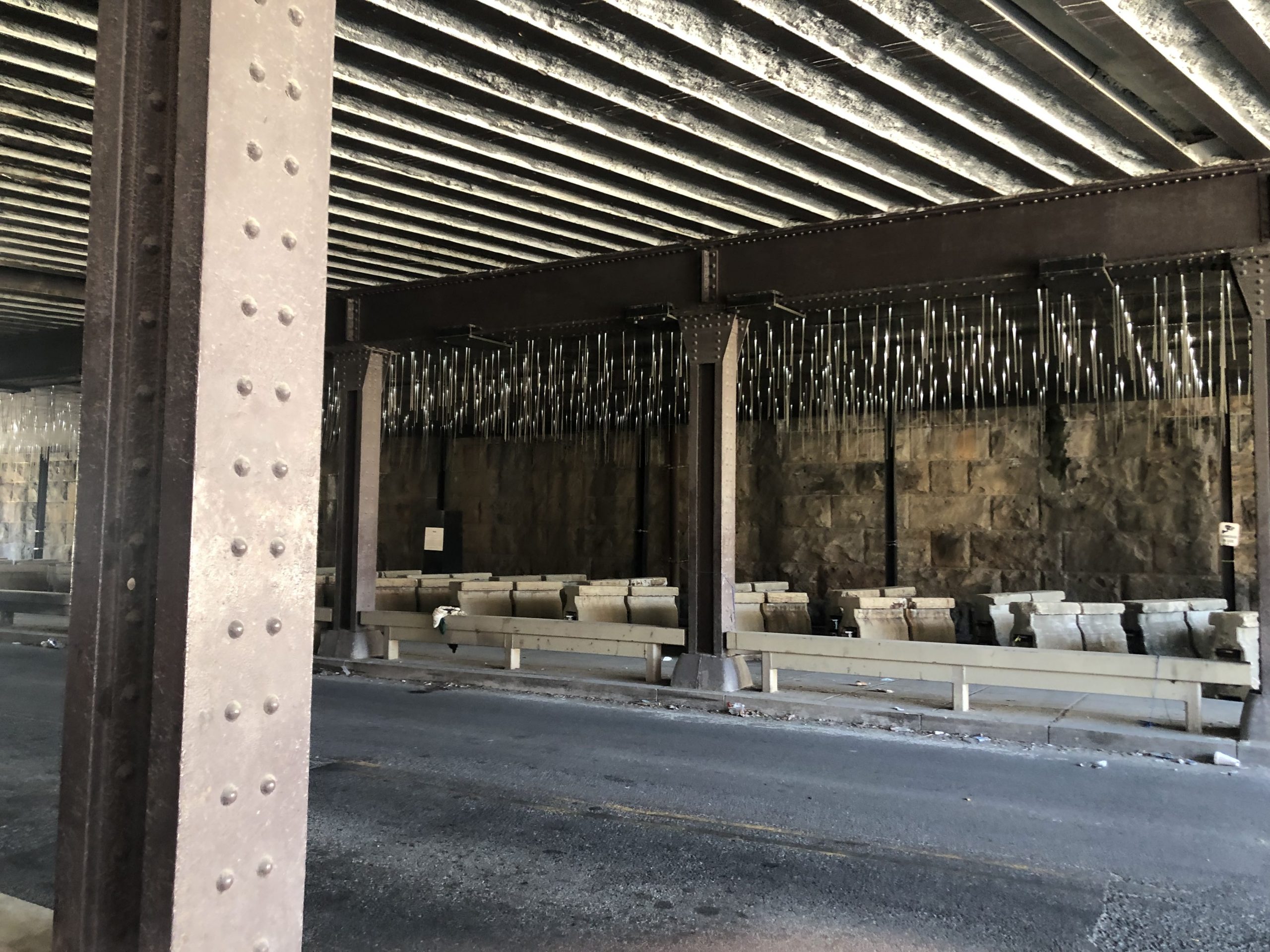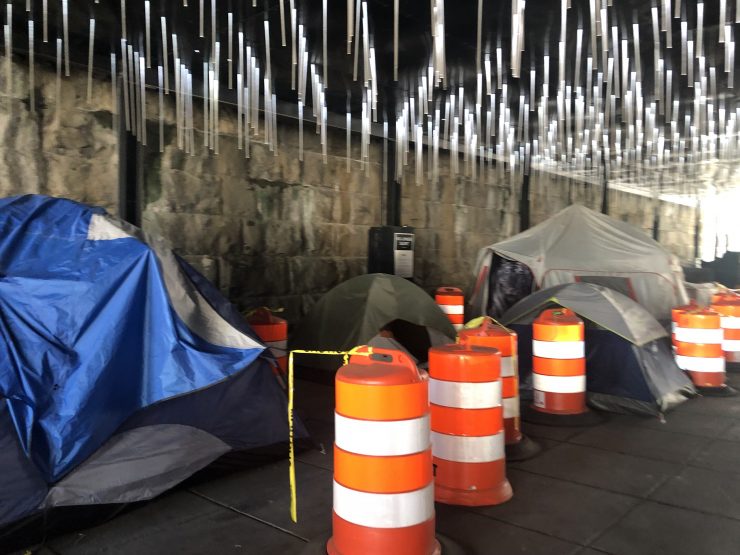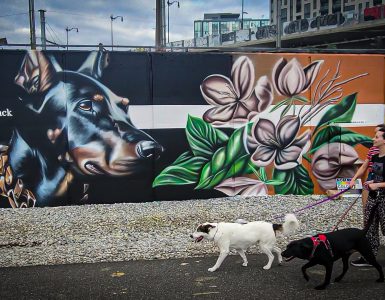D.C. council members and activists continue to criticize the Office of the Deputy Mayor of Health and Human Services’ encampment pilot program after two homeless encampment closures in NoMa on Oct. 4.
DMHHS posted on its website that it would conduct a “full clean up” of the L and M Street NE on Oct. 28. DMHHS had intended to permanently close both encampments on Oct. 4 but paused one clearing after it accidentally bulldozed a man who was still inside his tent.
DMHHS said the man was unharmed but was provided medical treatment as a precaution. But some activists are doubtful.
“He was sedated in the hospital and suffered physical injuries as well as emotional trauma,” said Cairo X of TLC Mutual Aid.
The man, who had a housing voucher at the time of the clearing, was allowed to leave the hospital that night. Activists arranged to have him stay in a hotel after he was discharged.
D.C. Councilmember Brooke Pinto, who represents Ward 2, published on Twitter a letter she and seven other council members wrote to Deputy Mayor Wayne Turnage on Oct 12.
Helping our unsheltered neighbors move into safe, secure & sustainable housing is a top priority. Today, 7⃣ of my colleagues joined me in sending this letter to @DMHHS_DC in support of the pilot program to expedite the housing process at some of our city’s largest encampments.👇 pic.twitter.com/vKaN6JIwC0
— CM Brooke Pinto (@CMBrookePinto) October 12, 2021
“We were extremely disturbed, distressed, and disappointed to see a bulldozer injure a resident in a tent at the NoMa encampment. This is wholly unacceptable and must never happen again,” Pinto wrote.
But activists say DMHHS has continued to use bulldozers and other heavy machinery at clearings.
DMHHS conducted an unannounced clean-up at M Street NE on Oct. 19, according to Shannon Clark of Remora House, an organization that provides supplies to unhoused people in D.C.
“That they have shown up multiple times with heavy machinery shows that they don’t care about housing people, they care about clearing out tents,” Clark said.
Councilmember-at-large Elissa Silverman published her own letter to Turnage on Twitter on Oct. 7.
New: @tweetelissa sent the letter below to @DMHHS_DC in response to the recent efforts to remove encampments in the District. It includes 6 recommendations on how to restore trust and move forward. pic.twitter.com/babkOu05GH
— CM Silverman Office (@CM_Silverman) October 7, 2021
Despite initial optimism about the pilot, “as time has gone on I have become convinced that despite good intentions our current approach does not adequately protect the health and safety of anyone,” Silverman wrote.
Activist groups and mutual aid organizations have encouraged D.C. residents to make their concerns regarding encampment closures known by launching a letter writing campaign. So far, 4,320 letters have been sent.
Silverman’s letter included six recommendations for DMHHS, including pausing all clearings and asking DMHHS to hold a public roundtable on clearings and provide clearer channels of communication with businesses and other community members.
Activists are less sure the encampment pilot can have a positive effect even if it is modified.
“Homelessness is a feature of capitalism, not a flaw. If we don’t realize when we walk past unhoused people that this could happen to us, it keeps us complacent,” Cairo X, of TLC Mutual Aid, said.
The Oct. 4 clearings were originally slated for Sept. 20 before being rescheduled for Sept. 27, as the city failed to provide the two weeks’ notice required by law. They were rescheduled a second time in part because of petitions activists circulated protesting the closures, according to Reginald Black, Executive Director of the People for Fairness Coalition.
DMHHS hoped to improve public health and safety conditions through the encampment pilot program. The NoMa Business Improvement District published an open letter complaining about the encampments in August 2019, citing public health and safety concerns.
“NoMa BID is aware of the complexity of this effort and understands that this is going to be an ongoing process from which the District and service providers will learn and develop best practices. We are optimistic that this pilot will help inform future efforts to identify and implement new solutions to address chronic and unsheltered homelessness for individuals,” NoMa BID president Maura Brophy said in a statement via email.
Elected officials and activists have criticized DMHHS for working quickly rather than carefully.
“It’s not sufficiently clear why the timeline is the way that it is,” said Maya Brennan, Silverman’s housing advisor. “It’s hasty, in the no-tent component.”

DMHHS’s website shows it has scheduled clean-ups at L and M Streets NE for Oct. 28, and a photo uploaded to Twitter shows a sign had been posted at the L Street encampment. No such sign has been posted at the M Street encampment.
Brennan echoed activists’ concerns about poor communication.
“We get answers from the deputy mayor’s office about why no-encampment is necessary, but we don’t get the followup dialogue to see whether those answers hold water.”
Advocates for unhoused people and elected officials agree that those living in encampments need permanent housing.
“There is no debate that the conditions people are living in under those underpasses in NoMa are inhumane and unsustainable,” Brennan said.
“We just want to figure out what the sustainable solution is.”















Add comment